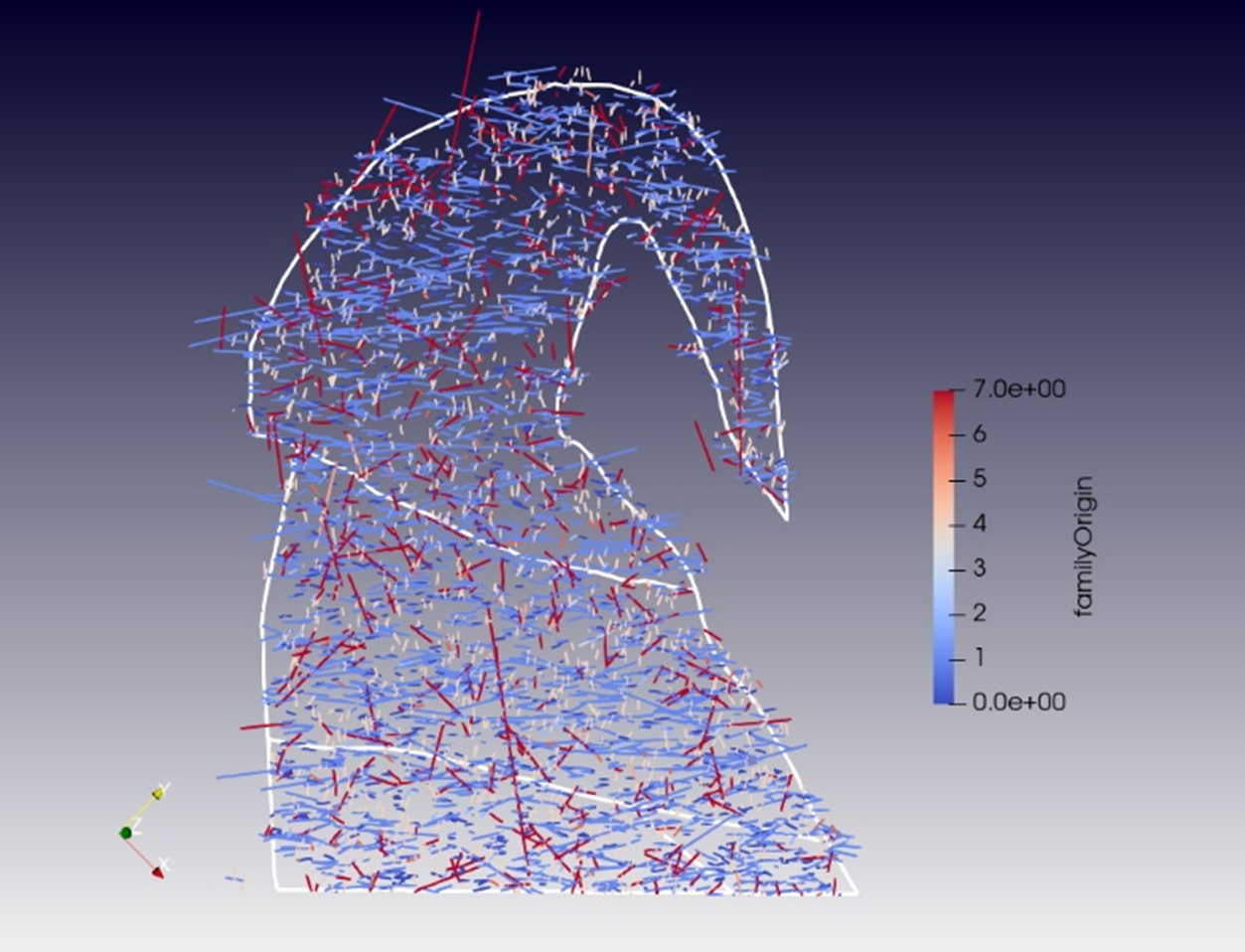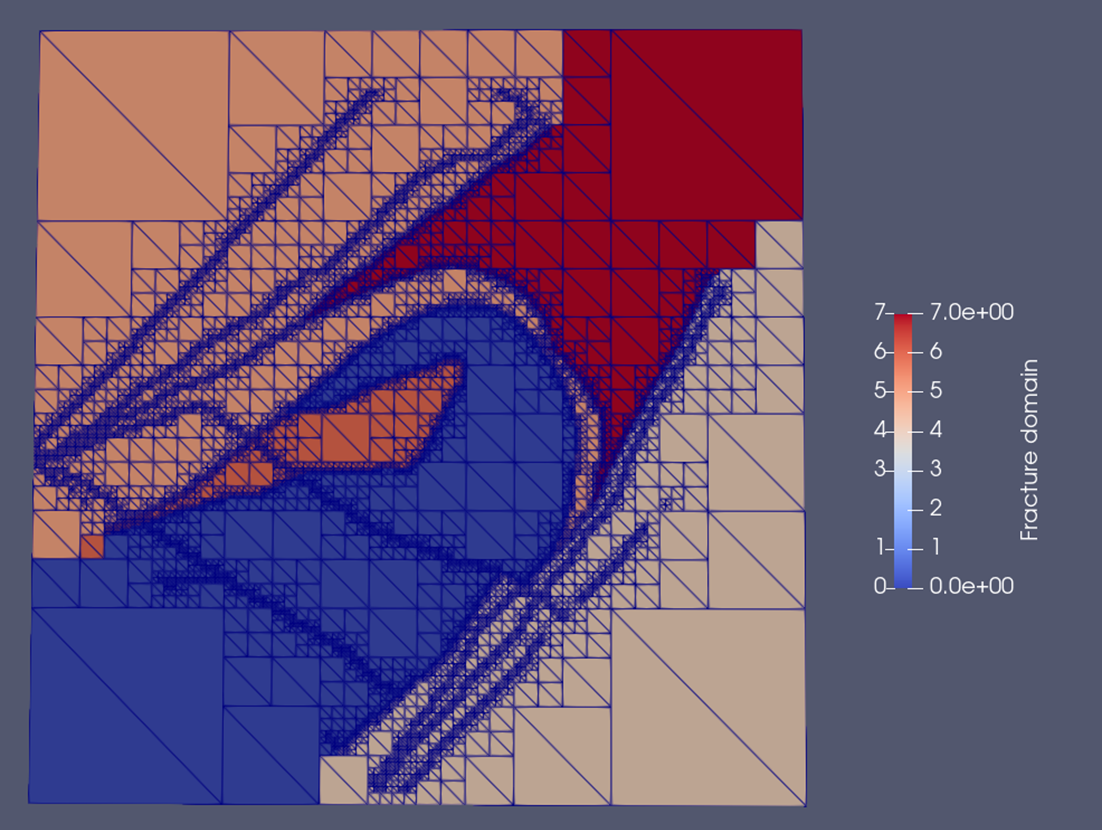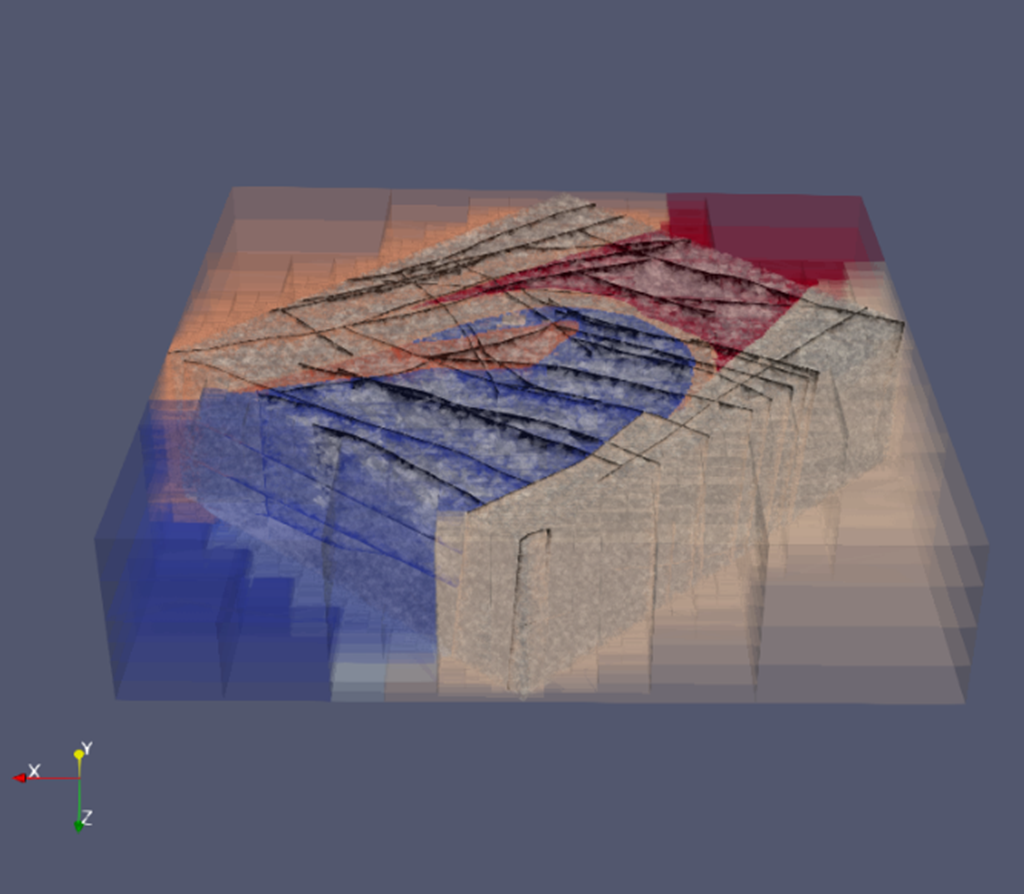Site modeling using DFN.lab
Project Description
In Sweden, the Forsmark site, a sparsely fractured crystalline host rock, is selected to be the future location for building a deeply sited nuclear waste disposal. The definition of highly detailed, and DFN (Discrete Fracture Network) based, site models is required for both post-closure safety assessment and construction purposes. DFN-based models are considered as the most accurate representation of the fractured system and of the geological context.
For the present project, a domain extent of 3780×3200×1110 m is defined. It contains several sub-volumes, the fracture domains, in between which the fractures exhibit different statistical properties. It also contains a few tens of deformation zones (e.g. large faults) whose shape and location are predefined. The first step of site modelling consists in building a numerical model of the site with a combination of deterministic information (limits of the fracture domains, position of the deformation zones) and statistical information (the DFN models) and stochastic generation processes to generate equiprobable realizations of the model, as classically done with DFN approaches. In the following steps and for safety assessment purposes, the model will be used as a basis to develop flow and contaminant transport simulations to predict the fate of contaminants from deposition holes and through the geological barrier formed by the crystalline bedrock.
Itasca's Role
The project is led within the Fractory, the joint laboratory between Itasca – CNRS and university of Rennes. The DFN site model is built with the software DFN.lab, developed by the Fractory. DFN.lab is a software platform dedicated to modelling rock masses from a DFN based approach with DFN models definition and generation, and capacities to perform single and coupled simulations and analyses of thermo, hydro, mechanical and transport processes. The code is driven by a Python API.
In the project, we developed DFN.lab python scripts, using Jupyter notebooks, to produce a DFN numerical analog of the selected domain that respects all the input requirements and that defines the input of the next steps with flow and transport simulations.
Project Results
The DFN numerical model stochastically generated accurately reproduces the input statistics and the spatial division in several fracture domains. The deformation zones are added to the model as large 2D non-planar surfaces.
The numerical model is delivered as a Jupyter notebook. It is parametrized to guarantee the user an easy control on the resolution of the DFN, i.e. the lower cut-off size of the generated fractures, while keeping the consistency of the statistics over larger fracture sizes. A sensitivity analysis of the DFN resolution is made to evaluate the performance and accuracy of the model.




